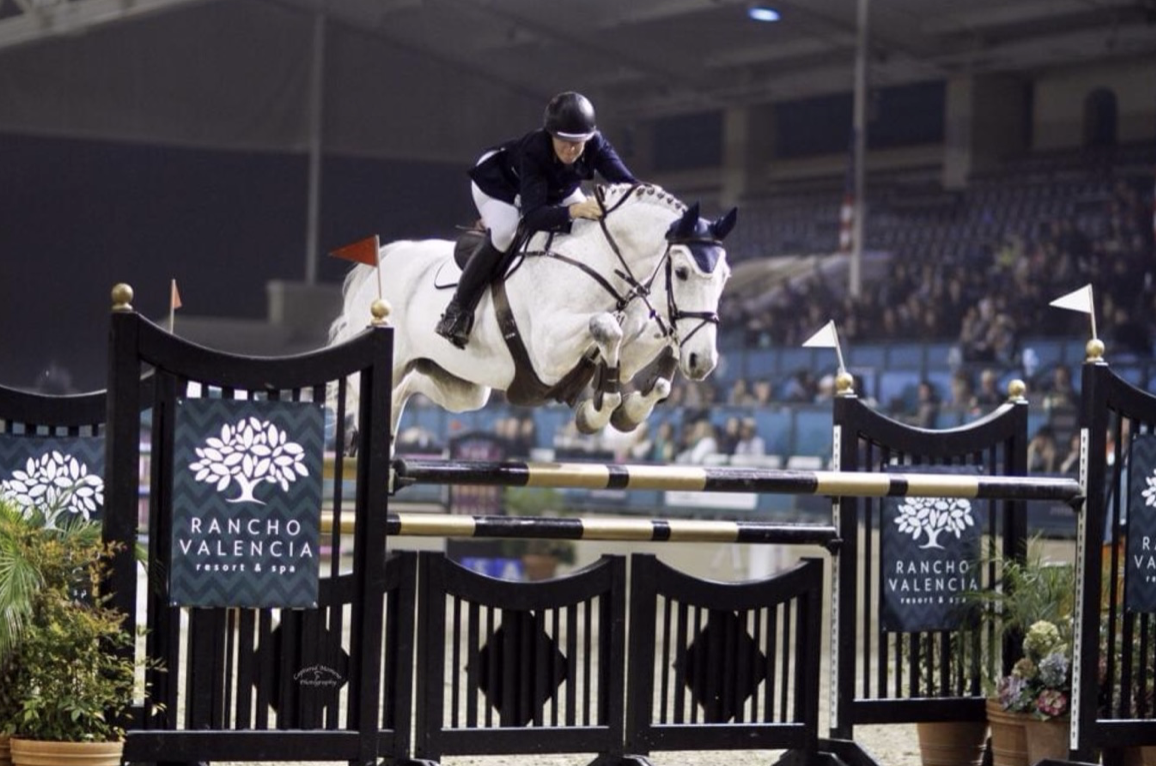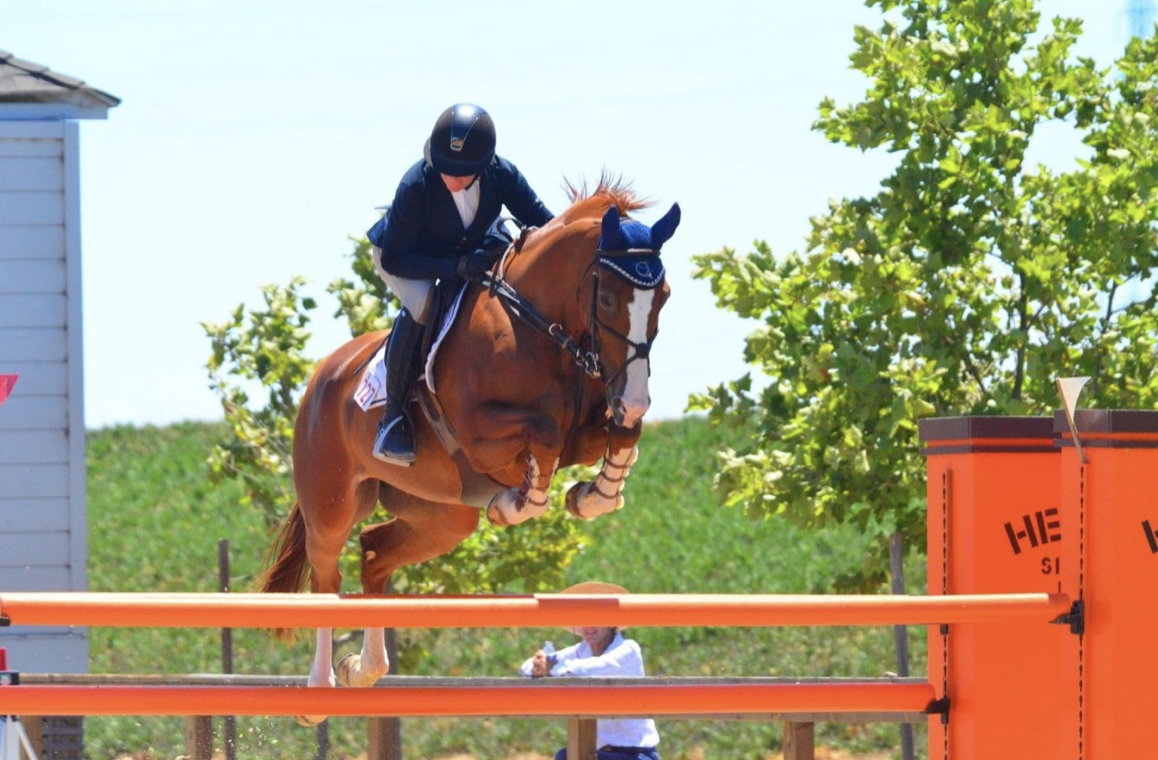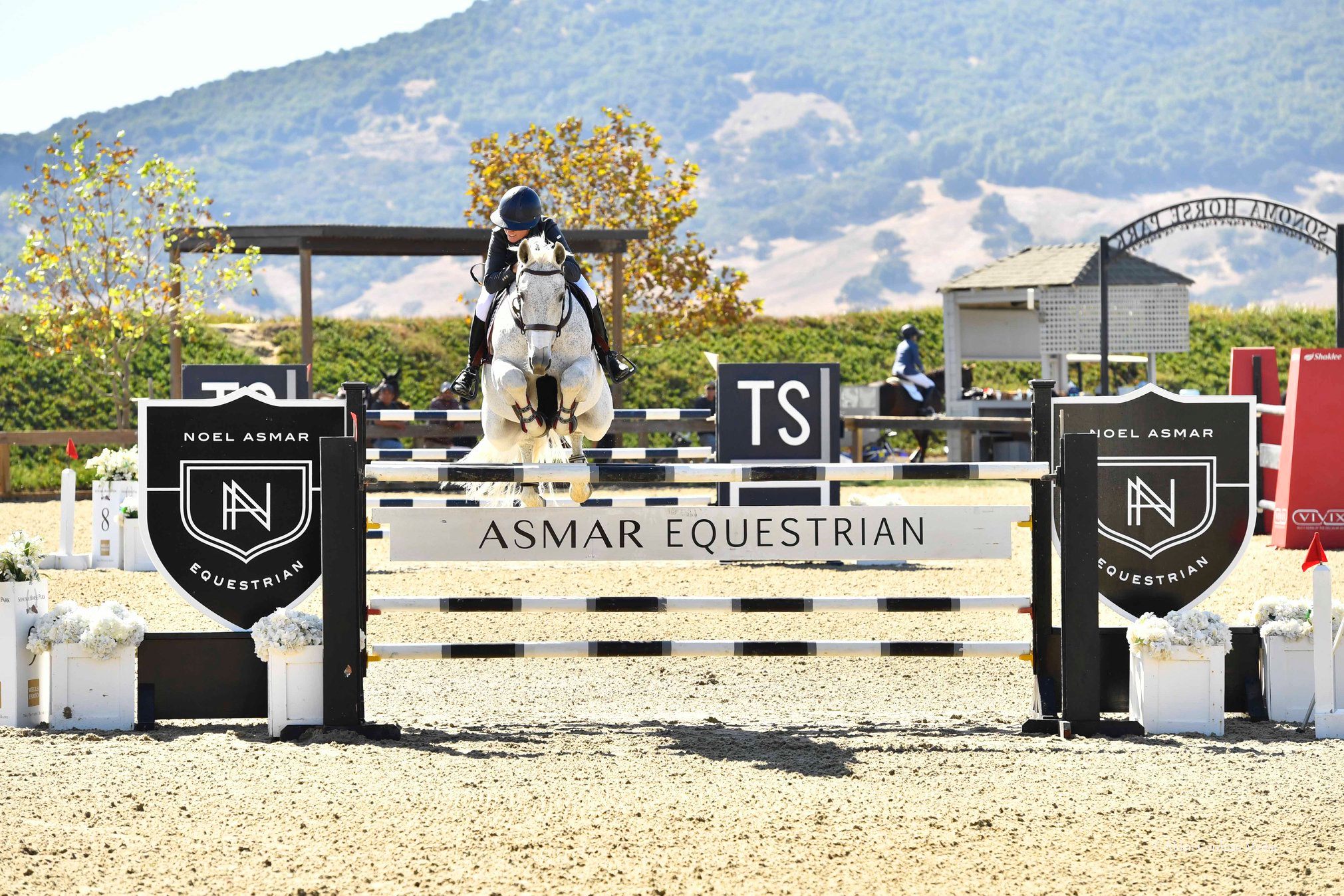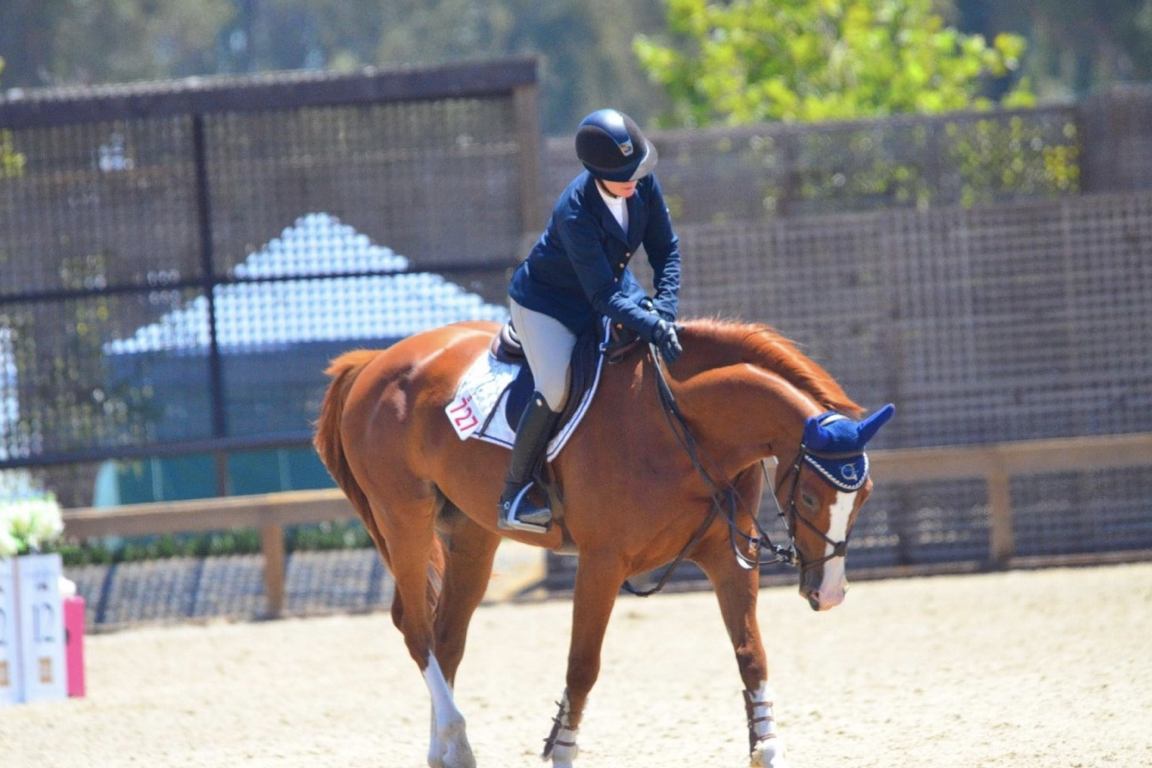
The Art of Catch Riding Jumpers with Carol Wright
Blog
The Art of Catch Riding Jumpers with Carol Wright
Imagine riding 20 or 30 jumper rounds a day. That’s a typical weekday at a horse show for Carol Wright of Crescendo Farm in Wilton, California. Catch riding is an art form and a sought-after skill and Carol is one of the best. She grew up riding horses – competing in her first show at age two – became a professional trainer at age 17 and has a resume filled with Grand Prix and World Cup wins. We chatted with her about catch riding and how she approaches each horse.

Conejito and Carol Wright. Photo: Captured Moments
“It’s cool to ride different horses,” Carol says. “I loved it as a kid, I remember riding for my trainer as a teenager, and eagerly looking at the board in the barn to see if I was going to ride someone new.”
First, a quick explanation of catch riding. We define it as riding a horse that belongs to someone else in a round or class at a show. There are numerous reasons a horse may need a catch ride. In Carol’s case, many of the horses she rides on Wednesdays and Thursdays belong to juniors or amateurs; the horse needs to get into the ring before it’s owner comes to show later in the week.
Trainers may need a catch ride for a horse when it’s impossible for them to be at multiple rings simultaneously, or they might be looking for someone to help school a horse that’s developing a bad habit in the ring or take one into the winner’s circle. While there are many reasons for a horse to need a catch ride – the premise remains the same. In many cases, the catch rider is showing a horse that they are not overly familiar with and have only taken a few warm up jumps with before heading in the ring.
“I did some catch riding when I was younger, I can’t say how it started then,” Carol says. “More recently, I started catch riding a lot. I had a good Grand Prix horse and wanted to show. I sold my farm and moved all my clients to other trainers and was on the road showing. I had time since I no longer had any clients, and people realized I was at every show. It started with a ride here and there, and people kept asking me to catch ride horses since I was there.”
Carol does not seek catch rides, instead they find her. For those looking to start catch riding, Carol emphasizes the importance of not trying to change the horse. Make it better in its own way and do whatever the horse likes in your round with it.

Carol and Valiant. Photo: Sarah Jorgensen
“Catch riding was never something I went out looking for,” she says. “People have asked me how it happened because they want to catch ride too. I was at the show and offered a ride and it grew from there. I have established barns that I catch ride for now, and three or four trainers that I work with. I’ll plan some of my show schedule based on where they are going. Sometimes catch rides are set up ahead of time, but for people that aren’t my regulars, I’m just there at the right time.”
The Warm Up
If Carol has seen the horse go before and has an idea of their style, strengths, and weaknesses her catch ride is a little easier. However, with many horses she doesn’t have that opportunity, and her time in the warm up ring helps prepare her for the round.
“I have a knack for riding many different types of horses – I’m not set in my ways at all so can work with any horse. I give them a pat on the neck or a rub on the face before I get on them. It’s kind of a handshake and a way of introducing myself. There’s a little mental telepathy – let’s be friends; be good to me and let’s make the best of this. My goal is to get the horse comfortable with me so I can get the best out of them in the ring.”
“Sometimes they want you to go in and win a division, but most of the time I’m catch riding junior and amateur horses to get them in the ring before their riders come to show. I have to know what my job is. Do they need me to give the horse a strong ride, build confidence and help him not be spooky in the ring, or something else? Once I know my job, then I ride the horse accordingly.”

Carol & Conejito
Most trainers give a quick rundown before she rides the horse – for example, it’s slow on a lead change or needs more leg in a combination. Carol always listens carefully and takes the advice to heart and uses it while riding the horse. She lets the trainers set the warm up jumps for the horse, occasionally she’ll ask for one more oxer or something else before heading in the ring.
“If I’m trying to be competitive with the horse I’m catch riding, I will try more things in the warmup to see what the horse will give me in the ring. I want to know what I can ask for and what he’s willing to do, and how fast I can go in a jump off. We figure that out in the warm up.”
Carol usually doesn’t even have time to trot the horses she’s catch riding. She gets on in the warm up ring and settles into a canter and takes a few jumps. Once mounted, she tries to read into the horse during warm up. She starts the warm up by jumping the way she normally jumps and if the horse doesn’t like it – where her leg is, how much leg she uses, or something else – Carol jumps the next one differently. She mentions that sometimes she’s halfway through a course before she figures out exactly what the horse wants and then adapts her riding style for the remainder of the round.
There are some horses that Carol catch rides regularly, and with those she knows what to expect. She spends the warm up preparing for any problems she had in their last round on the flat and setting the horse up for success.
“Horse owned by trainers are fun to catch ride,” she says. “Valiant is owned by Dusty Blackwood, a fellow trainer, that I’ve catch ridden him for the past three years, we have a bond. Valiant is a crowd favorite and he likes to buck – a lot. He’s fun because he wins more often than not, and he always goes out there and tries to win.”

Carol and Valiant. Photo: Sarah Jorgensen
Carol never tries to change a horse she catch rides or make it go her way. She doesn’t have time to try and change the horse – whether that’s how strong they are, heavy in the bridle, jumping style, or anything else. She tries to make the horse better for whoever is going to ride it next – that’s the key to being a good catch rider; determining how to push the buttons to make the horse happy, and not trying to change them.
“I mostly catch ride jumpers – they’re my true passion. I love to win, and the older I get, the more I find I love learning about so many horses. It feels really good when I get on and ask them to do something and they are like okay and go do it. Catch riding is very rewarding.”
Visit Carol Wright at CrescendoFarm.com to learn more!
